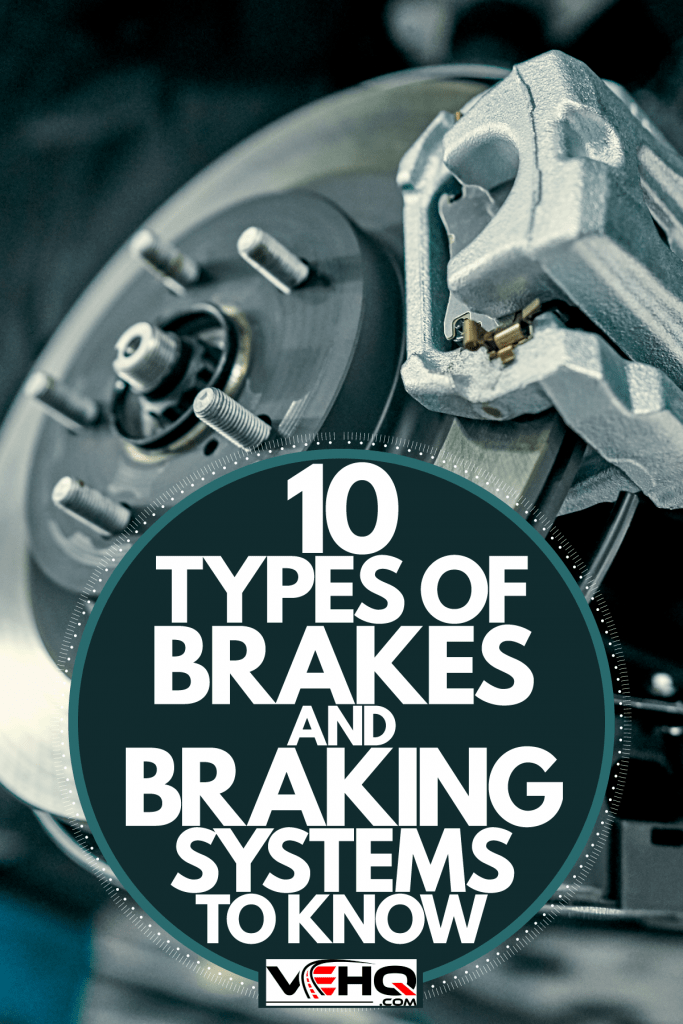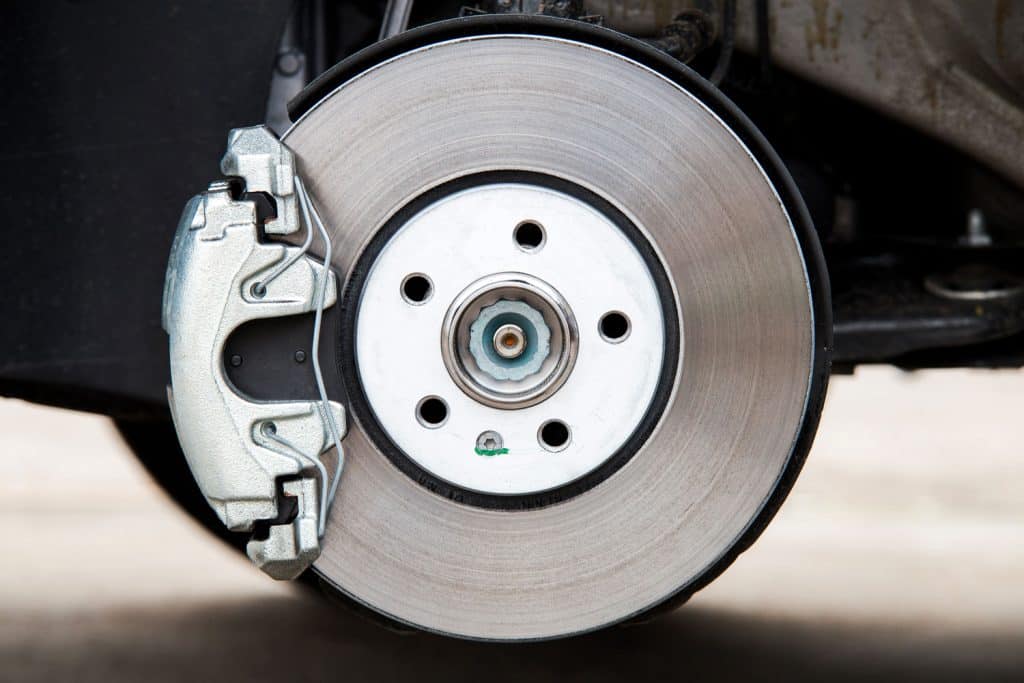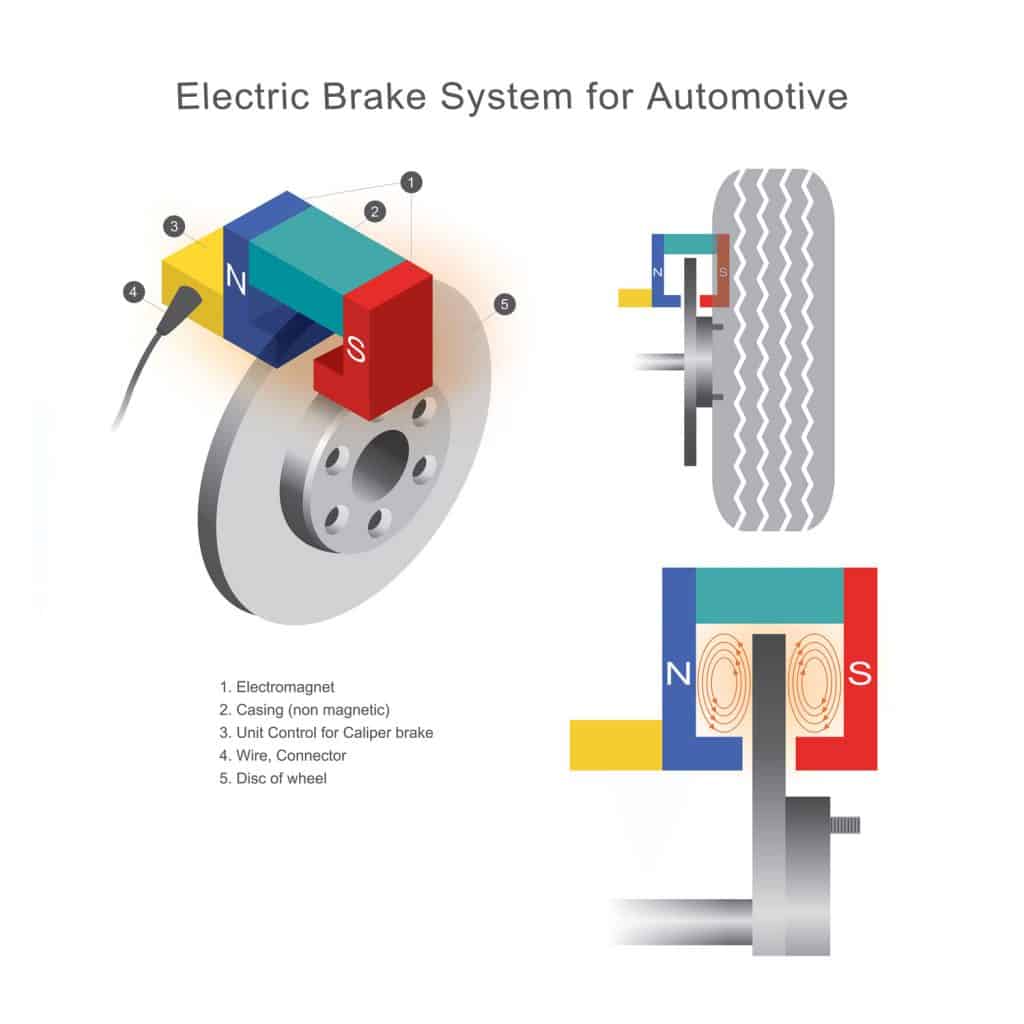Brakes are an important safety feature in your vehicle, and the more you know about this system, the better. This information will come in handy when it's time for troubleshooting and maintenance; not only will you know the signs when there are issues, but be able to explain to a mechanic what problems you are having. Knowledge like this also helps to keep you from paying for parts or labor that aren't required for your car to stop smoothly and properly.
In this post, we will go over the various types of vehicle brakes and braking systems, including trailer brakes, to bolster your confidence the next time you have to take your car into the shop. These vehicle brake systems are the most common:
- Disc Brakes
- Drum Brakes
- Emergency Brakes
- Anti-Lock Brakes
- Mechanical Braking Systems
- Servo Braking Systems
- Hydraulic Braking Systems
- Electromagnetic Braking Systems
- Electric Trailer Brakes
- Surge Trailer Brakes
Although this list may seem to be daunting, don't worry! We're going to go over each one, with pictures, and explain the advantages and any disadvantages to make it easier for you to recognize what type of system is responsible for stopping your car.

1. Disc Brakes

Disc brakes are the most common assembly on cars these days. It consists first of a rotor, the big silver disc attached to the wheel hub, which also holds the tire, and rotates along with the wheel. Next is the caliper, which is the big sliver clamp on the side of the rotor that holds the third part of the assembly, the pads -the black you see in between the prongs on the caliper- one on either side of the rotor.
When you hit the brake pedal, the caliper presses the pads against the rotor, which slows down or stops the rotation of the tires, causing the car to reduce speed or stop completely.
Because the rotor is mostly exposed to the open air - you can usually see it through the wheel of the tire - it cools much faster than other types of brakes. This makes it a better system for heavy-duty and high-performance vehicles. Disc brakes are easier to service than other brake systems. For example, rotors can sometimes just be resurfaced instead of replaced. They are self-adjusting and still work perfectly after being driven through water.
Disc brakes aren't perfect, though. They are at times noisy enough to become annoying, the calipers can stick, and the rotors are prone to warping or rusting. As with any other system in your vehicle, regular inspections of your brake system will help catch any problems early and fix them easily.
2. Drum Brakes
Click here to see Autospecialty Rear Replacement Brake Kit.
Drum brakes are usually found in older models of vehicles. Unlike the disc brakes, the drum brakes have the complete unit mounted to the wheels, and when the brake pedal is pressed, the shoes or crescent-shaped pads push outward to stop the rotating drum or the silver casing, which slows and stops the car.
Drum brakes are less expensive than disc brakes and are easier to maintain. Also, you can use them with disc brakes on the front wheels for better performance.
Using discs along with drums will help give better performance because drums heat up faster and reduce the car's ability to stop. This also causes the brakes to fade, making hard stops less efficient. Lastly, the performance can be compromised because the drums can't expel water as easily as disc brakes. Again, regular trips to the mechanic for a check-up will help keep costs and repairs low.
3. Emergency Brakes
Emergency brakes, otherwise known as parking brakes, are a separate system from the service (drums or disc) brake systems. Not all emergency brakes look the same. It can be a stick (shown), a pedal, or a button. When the emergency is engaged, the system uses cables to engage either the back or front brakes. It can be used as a backup system when the brakes fail or keep the car from rolling if the car slips out of gear.
Also, if you apply the emergency brake before releasing the parking brake, it will make it easier for you to later shift out of park and into drive. The downside is, if you forget to take off the brake, the brakes stay engaged and start smoking, and the car will not drive properly. Many newer cars are offered with automatic emergency brakes, so this won't be as much of a concern in the future.
4. Anti-Lock Brakes
Anti-lock brakes or ABS systems are found on newer cars and prevent the wheels from locking up and skidding during a sudden hard brake. The system has a sensor on each wheel that monitors and regulates brake pressure, so the wheels move at similar speeds.
Besides ABS giving the car a higher resale value and lowering insurance costs, the system's best benefit is that it helps the driver maintain control in icy and wet weather.
The system does have some downsides. It's expensive to maintain, with each sensor costing hundreds of dollars if it goes out of calibration. It is also a very delicate system that can mess with the brakes and cause the vehicle to shudder or make the braking time worse.
5. Mechanical Braking Systems
Mechanical brakes are found in older cars but, even though they are simpler and cheaper than other systems, aren't used these days because of their low effectiveness. When the brake pedal is engaged, force is applied to the drums or discs through a variety of mechanical devices like springs and fulcrums to stop the car. They are better used as emergency/parking brakes than as service brakes.
6. Servo Braking Systems
Click here to see the Remanufactured Vacuum Power Brake Booster on Amazon.
A servo braking system is also known as vacuum braking. The system consists of a large, hollow shell with a rubber diaphragm inside. When the brake pedal is engaged, an air valve opens, filling one side of the chamber with air, and the diaphragm then flexes towards the vacuum side of the chamber and engages the master cylinder, which then engages the brakes. The servo system increases the braking force compared to systems without the vacuum component but, if the air valves or the diaphragm doesn't engage, the brake pedal won't work properly.
7. Hydraulic Braking Systems
Unlike the previous systems, this one uses hydraulic fluid to transmit the force from the brake pedal to the calipers or drum shoes through the master cylinder. This system makes braking happen faster than the mechanical braking system, has fewer parts, and less chance of braking failure. Unfortunately, it is very difficult to completely get rid of leaks in a hydraulic system, and leaks stop the system from working. Leaks can also compromise the brake pads/shoes. Hydraulic line breakage could also cause serious injuries or fires.
8. Electromagnetic Braking Systems

These systems are found in many modern and hybrid cars. The system has electromagnets on each side of the rotor, which creates a force in the opposite direction of the spinning wheel. This engages the brakes to slow down and stop the car. Because the system doesn't use pads, there's no need for periodical replacement, and the system can support heavier loads and higher speeds. Unfortunately, because this system is dependent on battery power, it drains the battery faster and isn't as efficient at low speeds.
9. Electric Trailer Brakes
Click here to see the Electric Trailer Brake Assembly on Amazon.
Electric trailer brakes use power from the tow vehicle to work, and either proportionately controls the brake power based on the tow vehicle or has a time-delay system that has to be adjusted by the driver. Most brakes come with a safety circuit, so if the trailer detaches from the tow vehicle, safety brakes engage and stop the trailer. The system is similar to a car's drum brakes, where the shoes press against the spinning drum. Also, like the car's drum system, the electric trailer brakes tend to heat up, which can cause brake fade.
10. Surge Trailer Brakes
Surge brakes are used in place of electric brakes on a trailer. This system relies on centrifugal force to engage the brakes. There are two pieces to the neck of the trailer. When the tow vehicle slows down, the inertia pushes the back part of the neck into the front, engaging the brakes. Although surge brakes work smoothly, require no electricity, and are easy to work with, they are not recommended and are sometimes illegal to use with heavy loads, as you can not move the tow vehicle in reverse because it will engage the surge brakes.
No matter what type of brakes you have, we recommend you keep the following questions in mind:
What Is The Best Braking Method?
Remember, the brakes are a system of many components that, when treated well, can last you a long time. The following habits will keep your brakes in good condition and help them wear evenly.
- Brake no more than necessary - release the gas pedal to slow down instead of hitting the brake when possible.
- Let off the gas pedal for a few seconds before hitting the brake - this gives you a chance to not hit the brake unless absolutely needed.
- Keep your car as light as possible - the more weight you add to the car, the more energy the brakes have to use to stop the vehicle.
- Give yourself time to brake; hard braking should only be done in emergencies.
For About How Long Do Brakes Last?
Brakes last between 25,000 and 75,000 miles with variables such as environment and brake materials altering the life span. Consult your owner's manual and talk with your mechanic for a more accurate number.
How Can You Make Your Brakes Last Longer?
Following the braking methods above will help the brakes last, along with taking the car in to be serviced regularly. If you hear constant squeaking or - even worse - grinding, take the car to your mechanic and have it checked out. The sounds are letting you know there's something wrong and, the longer you wait, the more things you may have to have repaired or replaced. Also, make sure to flush your brakes every two years.
In Closing
There are various types of brake systems, but there is one thing they all have in common: if they are maintained and used properly, they will last a long time and keep you safe.
Looking for more information about brakes? Check out these articles:



